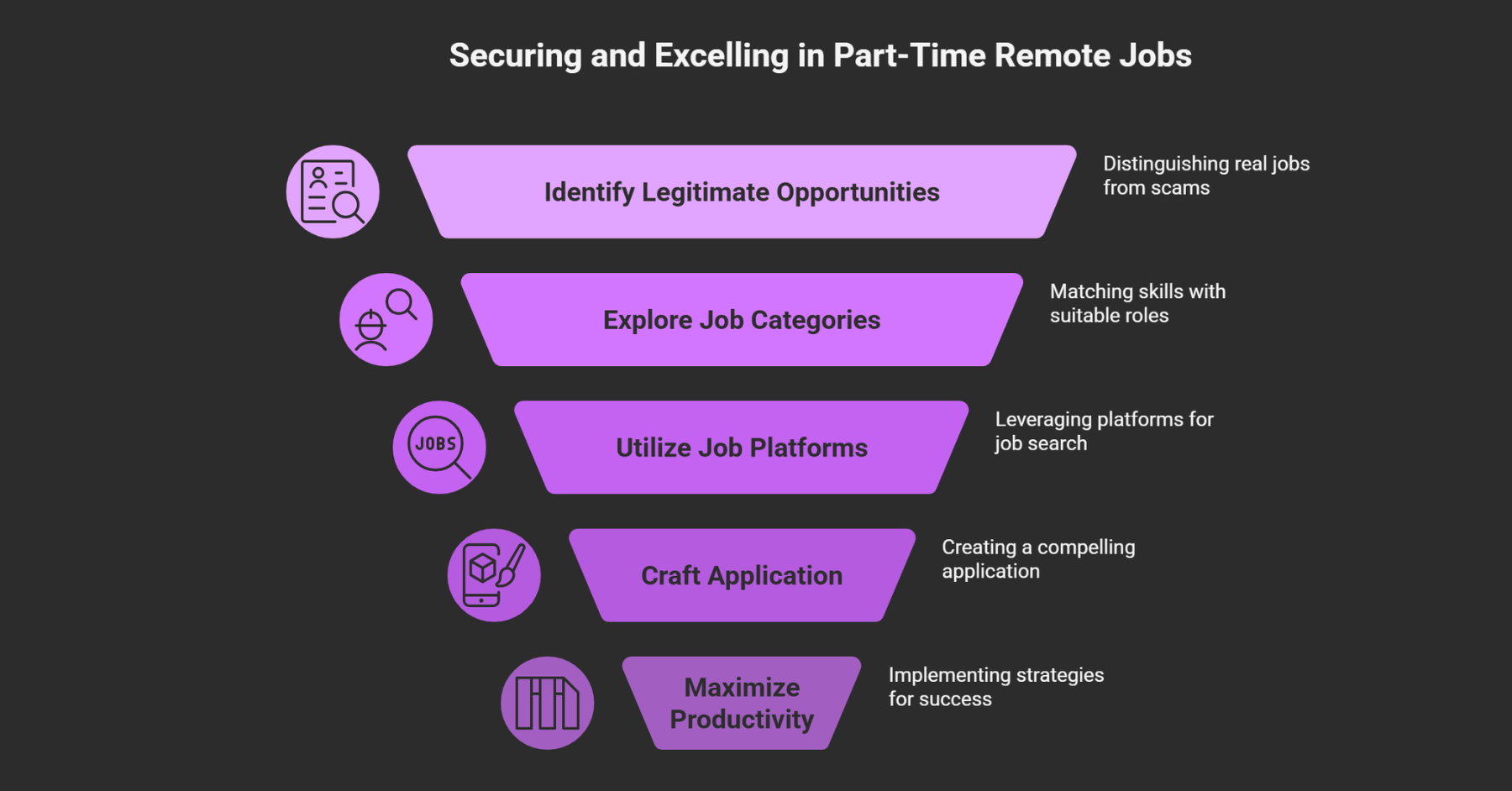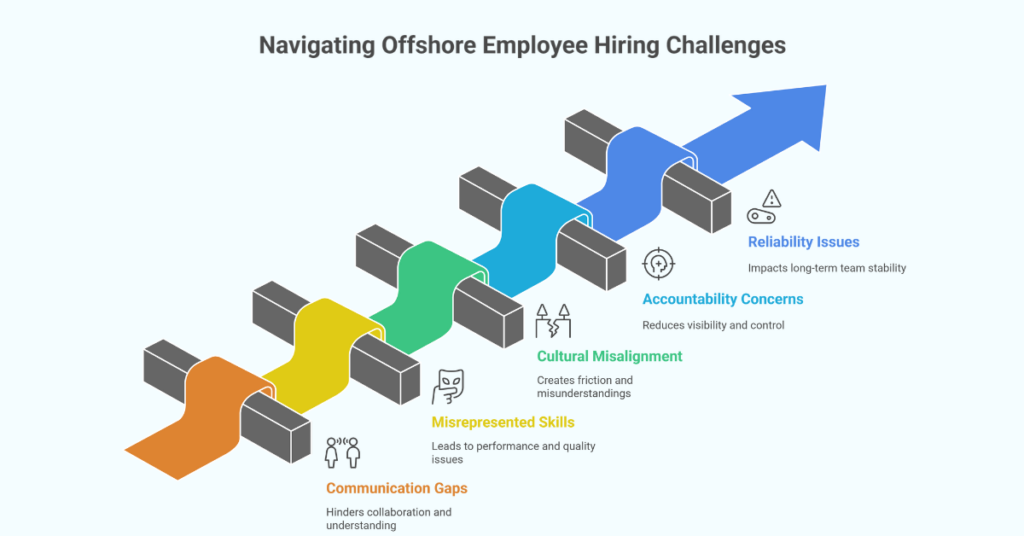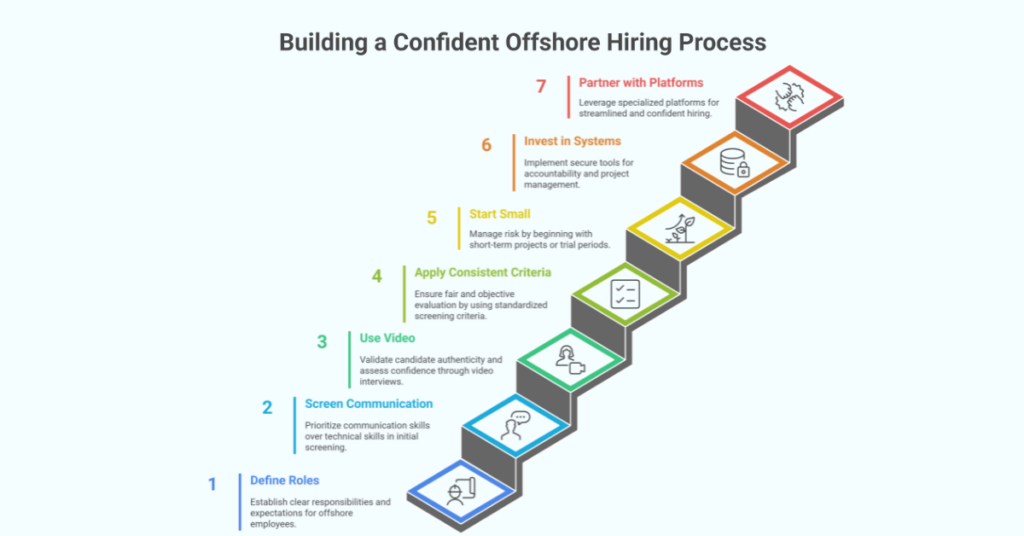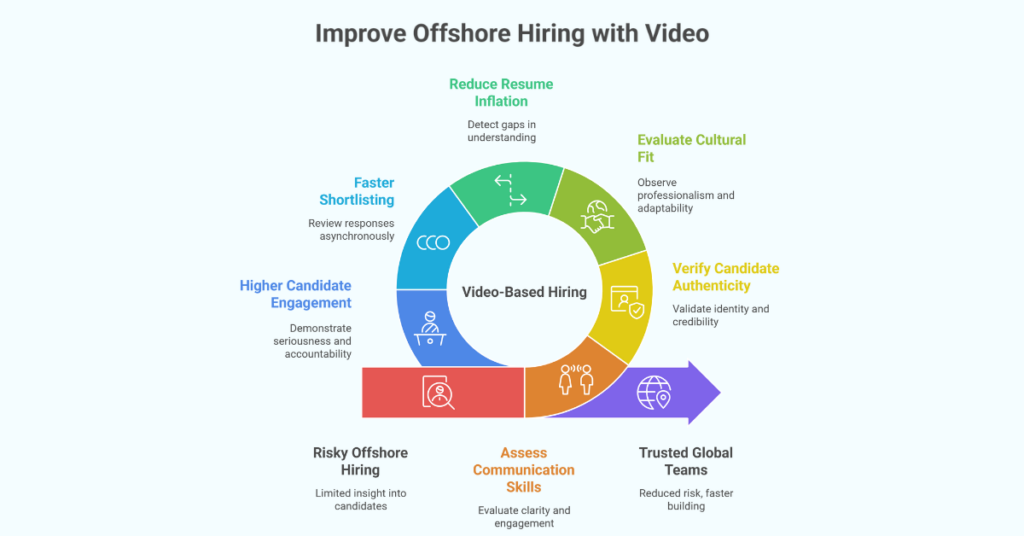“Part-time Remote Jobs empower you to balance life and income, unlocking the flexibility and freedom you deserve.”
The demand for part-time remote jobs has skyrocketed as professionals seek greater work-life integration and supplemental income. In 2025, it is estimated that more than 30 percent of the workforce will engage in part-time remote roles, driven by the need to balance caregiving, education, or entrepreneurial pursuits alongside employment. These flexible positions offer opportunities to gain valuable experience, reduce commuting costs, and test new industries without sacrificing primary responsibilities. However, finding legitimate part-time remote jobs can be daunting amid scams and vague listings. This playbook outlines proven strategies to identify genuine opportunities, tailor your application, master virtual interviews, and establish habits that foster long-term success. Whether you aim to supplement your income, build new skills, or transition to full-time remote work, this guide provides the step-by-step roadmap you need to unlock flexibility and thrive in a part-time remote role.
1. Beyond the Hype: Identifying Legitimate Work-From-Home Opportunities
To secure part-time remote jobs you must differentiate reputable employers from fraudulent schemes.
Balancing other commitments
Balancing professional responsibilities with personal obligations—such as caring for family members or pursuing education—requires careful time management and role selection. Part-time remote jobs allow flexibility in scheduling, enabling you to allocate work during optimal productivity hours and reserve time for other priorities. You can negotiate specific days or hours with employers, ensuring clarity around availability. By communicating boundaries upfront you reduce the risk of overcommitment and maintain consistent performance across all your responsibilities. These arrangements foster sustainable work patterns that respect both personal and professional needs.
Supplemental income
Earning additional income through part-time remote roles helps you achieve financial goals and build savings without the stress of full-time job searches. Supplemental pay can cover unexpected expenses, support investments in skill development, or fund side projects. Unlike gigs with irregular pay, part-time remote jobs often provide predictable, periodic compensation, enabling precise budgeting. You can choose roles that align with your existing expertise to maximize earnings per hour, making efficient use of limited time windows and increasing overall financial resilience.
Gaining experience
Part-time remote positions serve as valuable stepping stones for career growth, providing hands-on experience in new fields or advanced technologies while maintaining your primary role. You can explore diverse industries—such as digital marketing, customer service, or data analysis—to broaden your skill set and enhance your resume. This experiential learning allows you to validate interests before committing to full-time career changes. Demonstrating adaptability and remote collaboration in multiple contexts strengthens your professional profile and opens doors to future opportunities.
Reduced commute
Eliminating daily commuting saves both time and money, contributing directly to improved well-being and work-life balance. The average commuter spends over 200 hours per year on the road; part-time remote jobs eliminate this drain, freeing hundreds of hours for personal development or additional work. Reduced travel costs—fuel, public transport fares, vehicle wear—translate to significant monthly savings. With the added flexibility, you can structure your day around peak productivity and rest periods, promoting mental clarity and sustained performance.
2. The Best Part-Time Remote Job Categories for Every Skill Set
Part-time remote opportunities span a wide range of roles suited to various backgrounds and interests.
Virtual assistant
Virtual assistants perform administrative tasks—such as email management, calendar coordination, and data entry—for businesses and entrepreneurs. This role demands strong organizational skills, attention to detail, and familiarity with productivity tools like Google Workspace and Trello. You can work across industries, supporting multiple clients or specializing in niches such as real estate or e-commerce. Part-time hours allow you to manage responsibilities effectively, offering consistent support without full-time commitments. Successful virtual assistants often earn between thirty and fifty dollars per hour, depending on expertise and client requirements.
Freelance writing
Freelance writers create content—blog posts, articles, social media copy—for brands seeking engaging digital presence. This role requires excellent writing skills, research capability, and adaptability to various tones and styles. Part-time writers can take on specific assignments with defined deliverables, making it easy to balance writing projects with other obligations. Experience with SEO principles and content management systems like WordPress increases marketability and pay rates. Building a strong portfolio showcases versatility and attracts higher-paying opportunities over time.
Customer service
Remote customer service agents handle inquiries, resolve issues, and provide product guidance via phone, email, or chat. This position demands empathy, clear communication, and problem-solving abilities. Part-time shifts—morning, evening, or weekend slots—accommodate diverse schedules while ensuring consistent coverage for global customers. Proficiency with CRM software such as Zendesk and Salesforce streamlines case management and reporting. Competitive pay and opportunities for bonuses based on performance metrics make this a reliable income source.
Data entry
Data entry roles involve inputting, verifying, and updating information in databases or spreadsheets. Accuracy, speed, and basic computer skills are essential. Many companies offer part-time data entry positions that require only a few hours per week, ideal for individuals seeking minimal commitment. Familiarity with Microsoft Excel or Google Sheets, and attention to data integrity, ensure efficient workflows and reduce error rates. These roles often serve as gateways to more advanced remote administrative positions.
Online tutoring
Online tutors provide academic instruction—math, languages, test preparation—to students around the world. This role leverages your subject-matter expertise and teaching skills, requiring strong communication and patience. Platforms connect tutors with learners on flexible schedules, allowing you to set your hourly rates and availability. Providing constructive feedback and personalized learning plans enhances student success and generates positive reviews, increasing demand for your services. Tutoring in high-demand subjects can yield pay rates of thirty to seventy dollars per hour.
Social media management
Social media managers create and schedule content, engage with audiences, and analyze performance metrics for brands across platforms. Proficiency with tools like Hootsuite and Canva is crucial, alongside a deep understanding of each channel’s best practices. Part-time social media roles involve developing content calendars and reporting on engagement trends, making them ideal for creatives with marketing acumen. Building a strong online portfolio showcasing past campaigns and results attracts clients and leads to recurring projects.
3. Where to Hunt for Part-Time Remote Gems: Top Platforms and Strategies
Navigating the right channels and tactics accelerates your search and uncovers high-quality part-time remote roles.
Utilizing Remote Recruit’s filters
Remote Recruit offers advanced filtering options designed specifically for part-time remote jobs across industries. You can refine searches by hours per week, pay range, and role category—such as part-time customer service or freelance writing. Saved searches and email alerts notify you instantly when new positions match your criteria. By focusing on listings verified for legitimacy and employer responsiveness, you reduce wasted applications and improve your chances of securing a role quickly.
Networking in remote work communities
Joining online forums—such as specialized Slack channels, LinkedIn groups, and remote-work subreddits—connects you with peers sharing job leads and best practices. Actively participate by sharing your expertise and asking questions to build visibility. Many community members post unadvertised part-time opportunities or referrals, providing access to roles that never reach mainstream platforms. Personal introductions from community contacts often lead to faster hiring decisions.
Pitching services directly
Identify companies whose values align with your skills and reach out proactively with a concise pitch and portfolio. Craft personalized emails that highlight how you can solve specific challenges—such as streamlining their social media content calendar or managing customer inquiries during peak hours. Demonstrating research into their products, audience, and existing processes shows initiative and positions you as a solution rather than just an applicant. Direct pitches often bypass lengthy auto-screening systems and lead to quicker responses.
4. Crafting Your Part-Time Remote Application: Standing Out from the Crowd
Your application materials must reflect your reliability, efficiency, and remote readiness to impress hiring managers.
Showcasing availability
Clearly articulate your weekly availability, preferred time zones, and any scheduling constraints in your cover letter or profile summary. Providing structured time blocks—for example Monday, Wednesday, and Friday mornings—helps employers visualize how you fit into their workflow. Highlight flexibility for occasional adjustments—such as covering peak periods or urgent tasks—to demonstrate commitment. Transparent availability information builds trust and sets realistic expectations from the outset.
Highlighting efficiency
Emphasize past experiences where you delivered high-quality work under tight deadlines or managed multiple projects concurrently. Quantify results—such as processing one hundred customer inquiries per day or publishing three blog posts weekly—to showcase your capacity. Describe tools and techniques you use for productivity—like Pomodoro timers, project-management boards, or automation scripts. Demonstrating a structured approach reassures employers that you can maintain consistency when working remotely.
Creating a portfolio
Assemble a digital portfolio that features tangible examples of your work—writing samples, project screenshots, or case studies. Organize it logically by skill category and provide brief context for each item, specifying your role and the project’s outcome. Link to live websites, published articles, or online documentation to verify authenticity. A strong portfolio visually communicates your expertise and makes it easy for employers to assess fit without lengthy interviews.
5. Maximizing Your Part-Time Remote Success: Tips for Productivity and Communication
Thriving in part-time remote roles depends on establishing routines and clear channels for interaction.
Setting clear boundaries
Define specific work hours and communicate them to colleagues, clients, and family members to minimize interruptions. Use status indicators on collaboration tools—such as “In Focus Mode” or “Away”—to signal availability. Schedule personal breaks and lunchtime in your calendar to prevent overworking. Respecting these boundaries helps you maintain mental health and avoid burnout while ensuring deliverables are met reliably.
Effective time-blocking
Divide your day into focused work segments dedicated to single tasks—such as email triage, content creation, or tutoring sessions. Allocate buffer zones between blocks to handle ad hoc requests or urgent communications. Use digital calendars and timers to enforce adherence to your schedule. Consistent time-blocking enhances concentration, reduces task-switching overhead, and increases overall efficiency in your part-time workload.
Proactive communication
Provide regular status updates—daily or weekly—summarizing accomplishments and upcoming priorities. Anticipate potential issues and propose solutions before they escalate. Seek feedback frequently to ensure alignment with expectations and adjust your approach as needed. Sharing clear agendas ahead of virtual meetings optimizes time usage and demonstrates professionalism. Proactive communication fosters trust and strengthens remote collaboration.
How Remote Recruit Empowers Employers and Job Seekers
Remote Recruit accelerates your journey into part-time remote jobs by offering curated listings, robust filtering, and advanced matching algorithms. Job seekers can set precise criteria—such as hours per week, pay range, and role type—to discover roles that fit their availability and career goals. Personalized job alerts ensure you never miss an opportunity, while profile analytics highlight your strongest skills to employers. Video-resume features allow you to demonstrate communication style and remote-work competencies, providing a competitive edge. Employers benefit from access to a global roster of qualified part-time talent vetted for reliability and skill proficiency. Integrated messaging and one-click scheduling streamline screening, cutting time-to-hire by up to 40 percent. Compliance tools automate contract generation, payroll setup, and tax documentation across jurisdictions, simplifying legal requirements. With Remote Recruit, both sides gain transparency, efficiency, and confidence in the part-time remote hiring process.
Conclusion
Part-time remote jobs offer unparalleled flexibility, supplemental income, and growth opportunities for professionals balancing multiple commitments. By following this definitive guide—from identifying legitimate roles and tailoring your resume to mastering virtual interviews and establishing productive routines—you will position yourself for success in the competitive remote landscape. Strategic application of these tactics helps you stand out, secure stable part-time engagements, and thrive in a dynamic work environment. Platforms like Remote Recruit amplify your efforts with targeted job matches, video-resume tools, and streamlined hiring workflows. Embrace the strategies, leverage the technology, and cultivate the habits outlined here to unlock new levels of flexibility and fulfillment through part-time remote roles in 2025 and beyond.
Frequently Asked Questions
Q1: What qualifies as a legitimate part-time remote job?
Legitimate roles offer clear job descriptions, defined responsibilities, and transparent compensation. Beware of postings demanding upfront fees, vague requirements, or unrealistic pay promises without interviews or contracts.
Q2: How do I manage taxes for part-time remote work?
Report income according to local tax regulations and maintain accurate records of earnings. Use accounting software to track payments, and consult a tax professional to ensure compliance across multiple income sources.
Q3: Can part-time remote jobs lead to full-time opportunities?
Yes. Performing well in part-time roles can showcase your reliability and skill, leading employers to extend hours or offer full-time positions based on proven performance and cultural fit.
Q4: How many hours per week constitute part-time remote work?
Part-time remote roles typically range from ten to thirty hours per week. Exact expectations vary by employer, so clarify required availability and flexibility during the application process.
Q5: How can I advance my career through part-time remote roles?
Use part-time roles to acquire new skills, build a diverse portfolio, and expand your professional network. Demonstrating success and adaptability in remote settings can open doors to higher-level or specialized opportunities.
Sign up on Remote Recruit today to explore part-time remote jobs and elevate your career.




